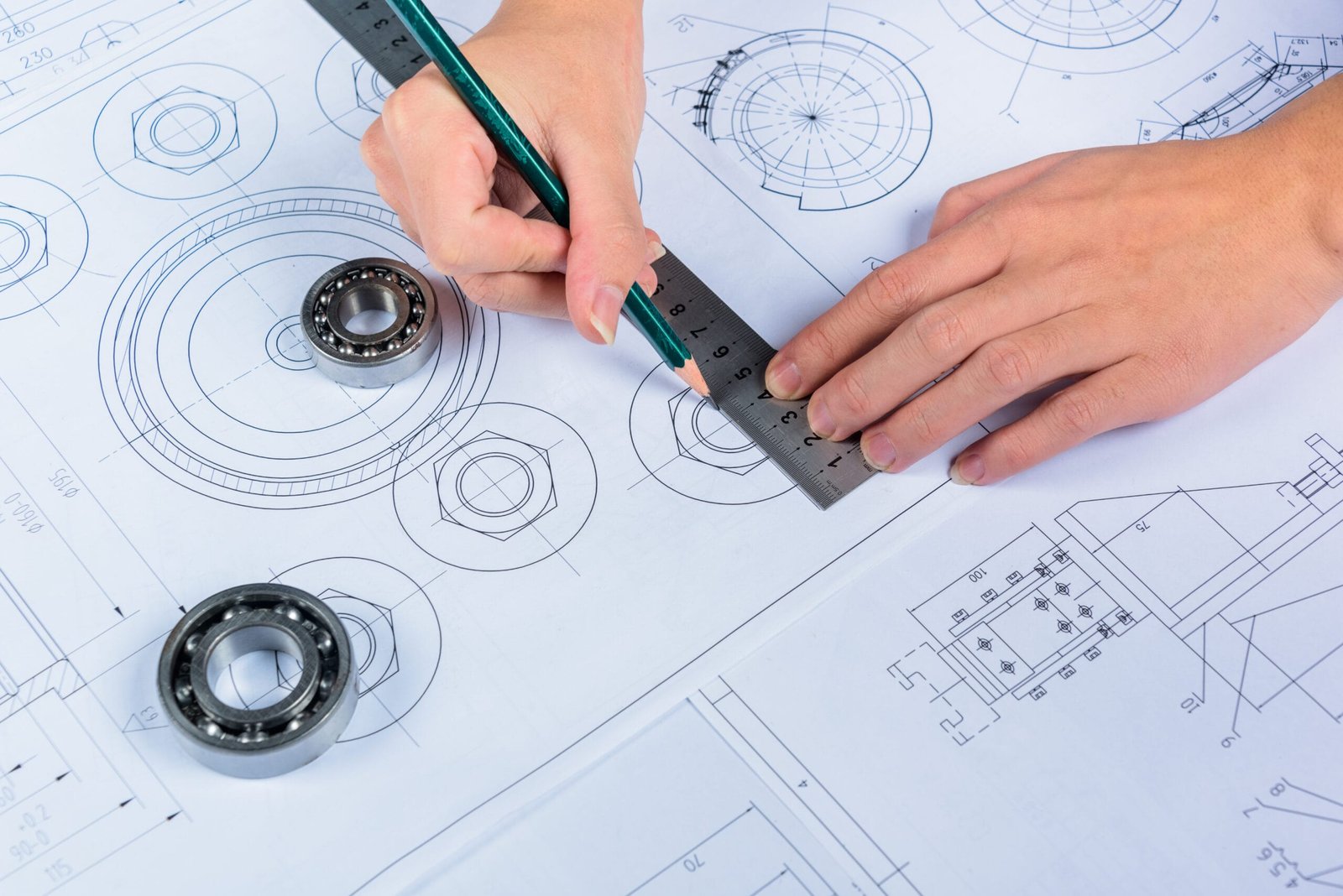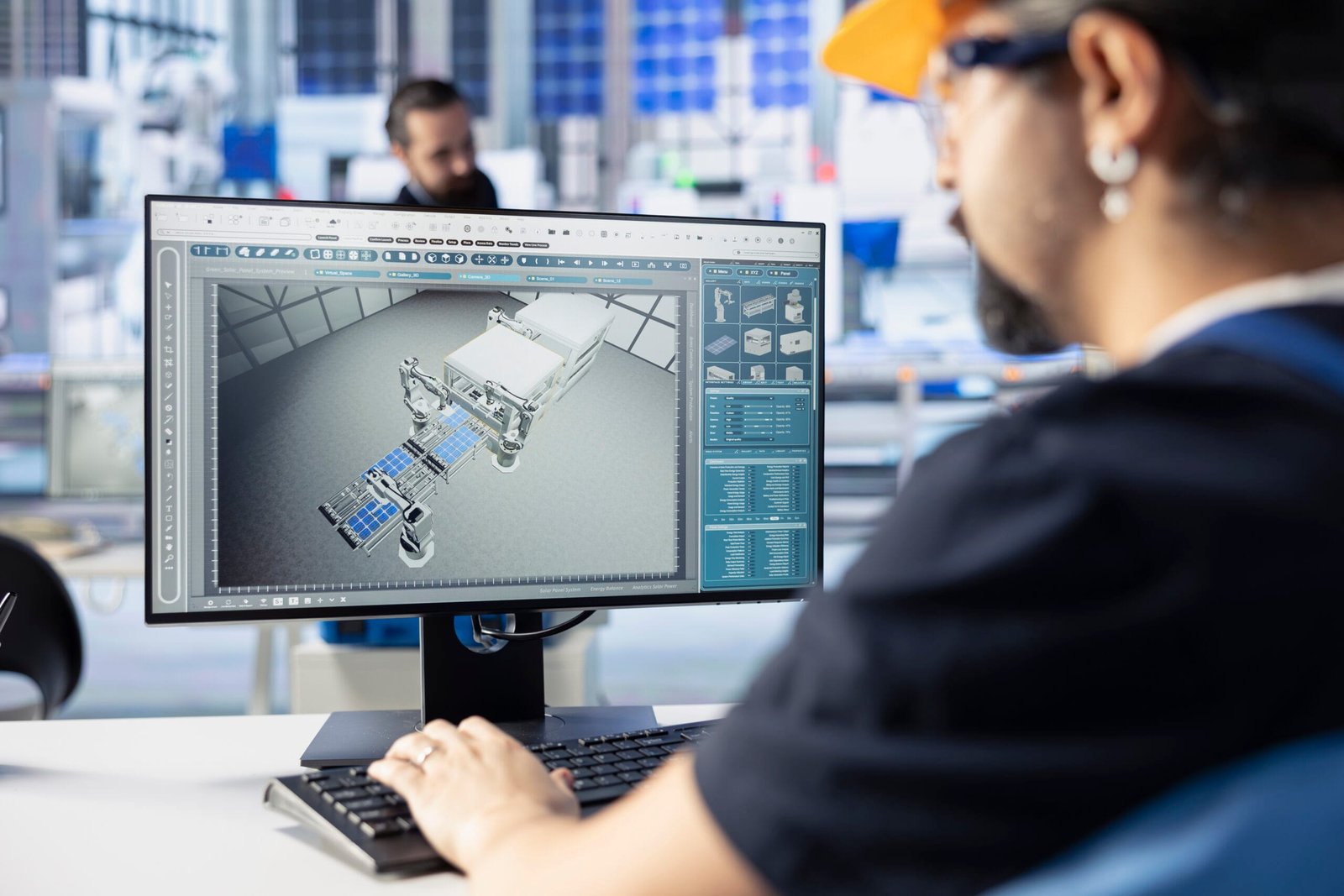Description:
Today, we will discuss how Siemens NX Rendering turns visual design at Design Hok. This results in increased productivity and client communication. You can learn about the features, benefits, and uses in mechanical design projects.
At Design Hok, we make sure that our projects are accurate and clear. So, this ensures that every engineering and design project is successful. Hence, it becomes very important to use Siemens NX Rendering. Siemens NX is a powerful software that has built-in CAD, CAM, and CAE software that allows high-level rendering. These help in turning engineers and designers into imagining things in a pictorial form before making them. We will learn about how Design Hok uses Siemens NX to make their design work better. Apart from that, it helps in better communication with clients. You can also speed up the project development.
What Is Siemens NX Rendering?
It is the process of creating real-looking images from 3D models. This is done by mimicking how light interacts with surfaces, materials, and environments. You can make photorealistic images with the help of the rendering engine in NX. That is why stakeholders are able to understand the final look of the structure. You can adjust shadows, material properties, and other things. NX Rendering easily adjusts according to your modeling workflow. So, this makes it easier for engineers and designers to move to visualization without the help of software.
Why DesignHok Chooses Siemens NX Rendering
DesignHok handles various projects in 3D modeling, mechanical design, and 2D/3D drafting. For such detailed work, visualization isn’t just a presentation tool—it’s part of the design process. Siemens NX rendering supports DesignHok’s mission of delivering technically precise and visually convincing design solutions.
Why is it the Best:
- Real-Time Visualization: You can view live designs at Design Hok, which allows you to make decisions at the right time.Integrated Workflow: You do not need to shift from one platform to another when you are rendering in Siemens NX. This gives you a smooth and productive workflow.
- High Fidelity Results: You are able to get real-looking visuals with photorealistic output.
- Material Customization: Designers make the objects look real by adding textures and finishes. This results in a real-looking object, such as a shiny surface for metals, and much more.
Important Features DesignHok Uses Siemens NX Rendering
- Ray Traced Studio
Ray Traced Studio is an amazing tool in Siemens NX. You can create real-looking images with this tool. The process involves understanding how light behaves in the real world and copying that. You are able to see accurate reflections, shadows, and textures. - HDRI Lighting
High Dynamic Range Imaging helps DesignHok to copy natural lighting conditions. You get a model like it is in the real world, with shadows and reflections. - Custom Material Libraries
You can make your own library of materials with the help of Siemens NX. DesignHok uses this to become more consistent across projects. If we create a custom material like brushed aluminium, then we can use it in different designs. - Scene Management
Siemens NX lets you adjust the scene environment for rendering a design. So, you can show a product in an industrial environment to show its functioning in real life. You can focus it on a clean, simple background to only show the product. - Batch Rendering
You can do batch rendering to process multiple scenes simultaneously. Design uses this technique to save time and improve productivity.
Applications of Siemens NX Rendering at DesignHok
1. Client Presentations
You may consider a 3D model as accurate, but clients have trouble understanding it. So, Siemens NX Rendering is useful to make attractive images that help clients understand your design clearly.
2. Mechanical Assemblies
You may find it difficult to understand complex mechanical assemblies and their function. You can see separate parts, visualizations that help in presentations and team reviews.
3. Marketing and Portfolio Development
DesignHok showcases its work across platforms and proposals. You get detailed images that appear real through high-resolution renderings. So, your project looks professional and polished.
4. Simulation Visualization
You may find it difficult to understand simulation results without proper images. So, you can show results on 3D models for both engineers and clients.
Advantages of Siemens NX Rendering for DesignHok
Better Decision Making: Clients find it easier to understand a design when it is shown in pictorial form.
Minimize Errors: When an object is presented in a real-world setting, you are able to identify mistakes before production.
Cost Savings: You can figure out flaws and so fewer prototypes are required. So, it minimizes cost and saves time.
Improved Collaboration: Rendering is like a common language. Engineers, designers, and clients are able to improve their designs using it.
Enhanced Creativity: You can further push your creativity when you see realistic lighting and materials.
Future Outlook: AI and Rendering
Siemens adds AI features to NX, as well as enhancements to the rendering process. Now you will see AI-powered tools for lighting setups and recommend the best materials. You can also make different types of renderings
Summary
Siemens NX Rendering is not only a visual accessory. It is an important part of the design and development lifecycle at DesignHok. Your designs look real, like a photo. So, people can view the design clearly and feel confident about it. Moreover, designers can show their ideas in a better way. Design Hok handles your project carefully by doing high-quality visualization. So, we make sure that your designs are correct and impressive. Siemens NX is the best for showing your work or presentations. Therefore, we show the design clearly and accurately.
FAQs
Q1: Why does Design Hok use NX rendering?
A: You can create real-looking 3D models for better understanding, appearance, and decision-making.
Q2: Do you use Siemens NX rendering only for mechanical designs?
A: No, while it’s widely used in mechanical design. It can be used in other fields like industrial design, product design, and others.
Q3: Will Siemens NX rendering work with low-quality graphics?
A: The software works best when used with powerful graphics cards. This is because it makes tasks like rendering faster.
Q4: How can you improve client communication with rendering?
A: Clients may find it difficult to understand technical drawings. You make them better understand the functionality of the final product by providing clear and realistic visuals.





